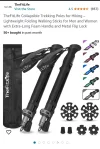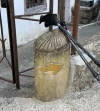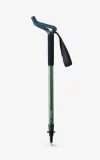- Time of past OR future Camino
- Spring 2025
Hi there fellow Peregrinos!
I will walk my first Camino in May 2025 and am slowly gathering my equipment. I have my boots that I've been hiking in and this pair seem to be good. I really want a pair of Trek Poles now as I am training on inclines and declines now. I went to REI last weekend and I just wasn't sure with the selection offered if they were the right poles for me, they all had very mixed reviews.
I was wondering if you could give me your reviews on the poles you've used? What you liked, what you didn't. Did they go the distance, did you use them just to climb or descend or to walk with daily.
I plan to walk the whole Frances so I will need poles that will stand the test, so to speak. I really appreciate your time and consideration.
I will walk my first Camino in May 2025 and am slowly gathering my equipment. I have my boots that I've been hiking in and this pair seem to be good. I really want a pair of Trek Poles now as I am training on inclines and declines now. I went to REI last weekend and I just wasn't sure with the selection offered if they were the right poles for me, they all had very mixed reviews.
I was wondering if you could give me your reviews on the poles you've used? What you liked, what you didn't. Did they go the distance, did you use them just to climb or descend or to walk with daily.
I plan to walk the whole Frances so I will need poles that will stand the test, so to speak. I really appreciate your time and consideration.























